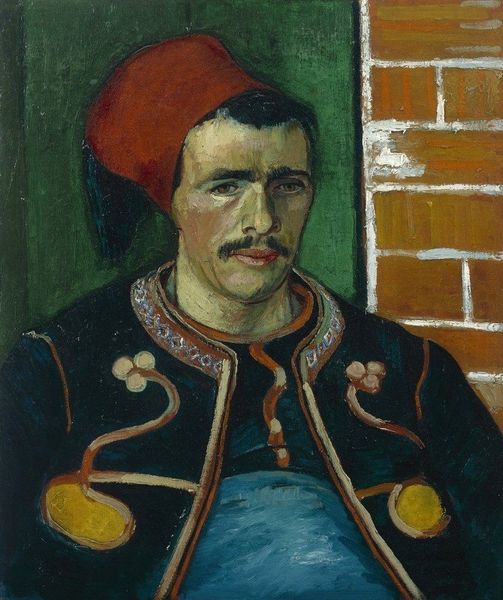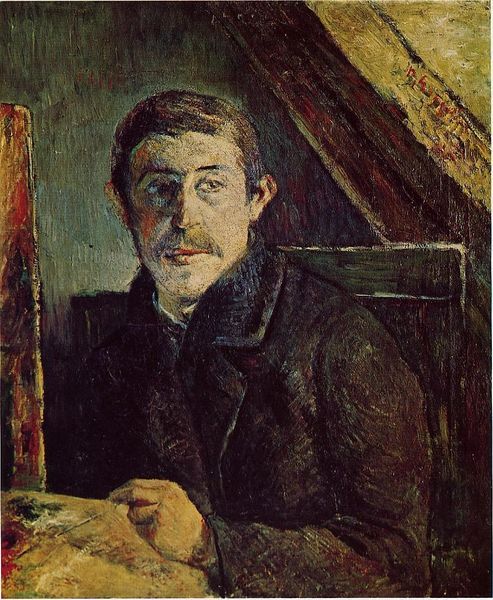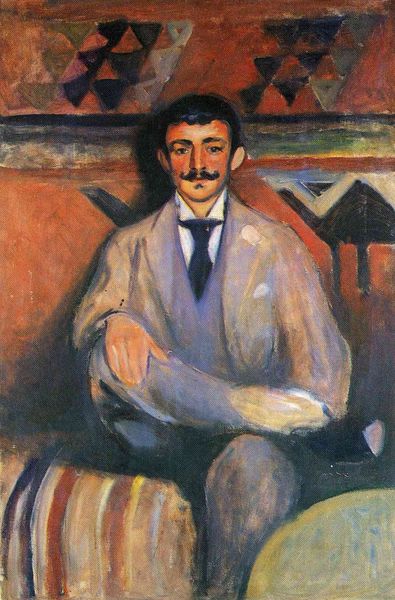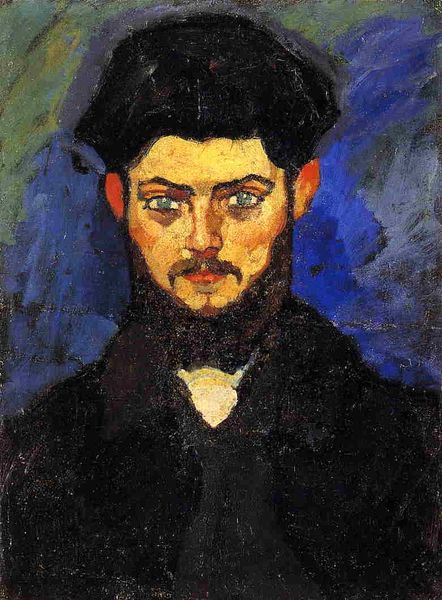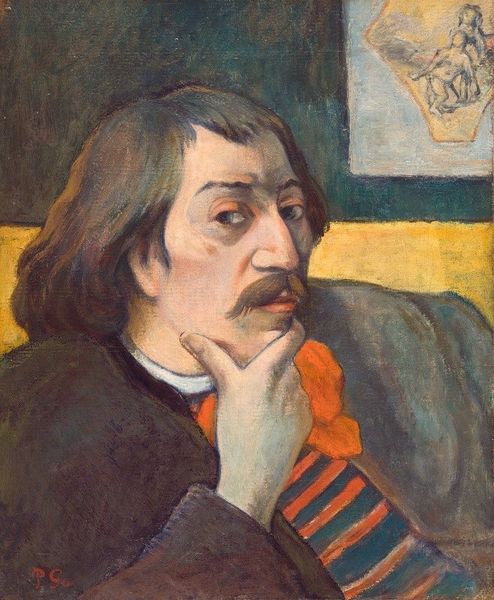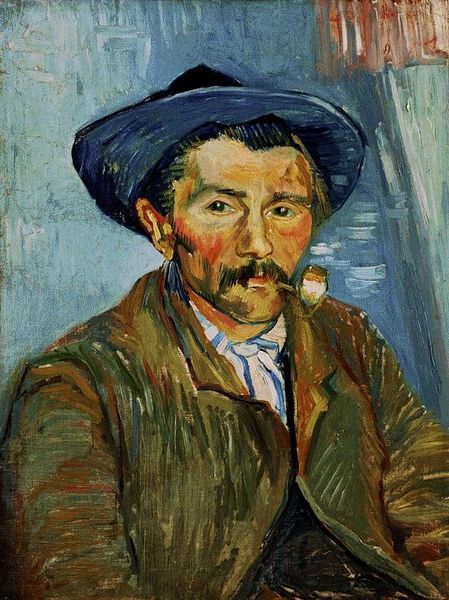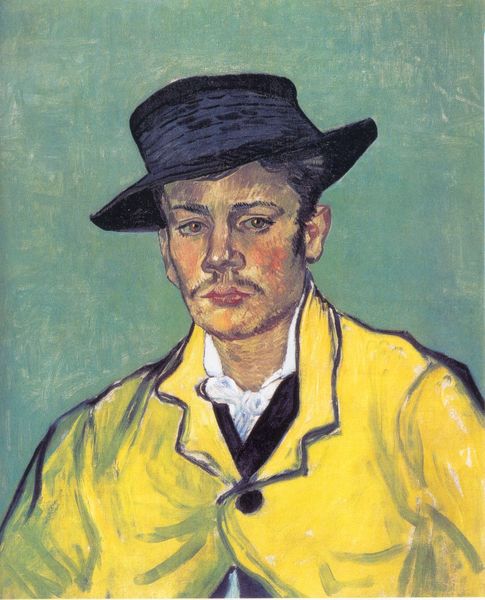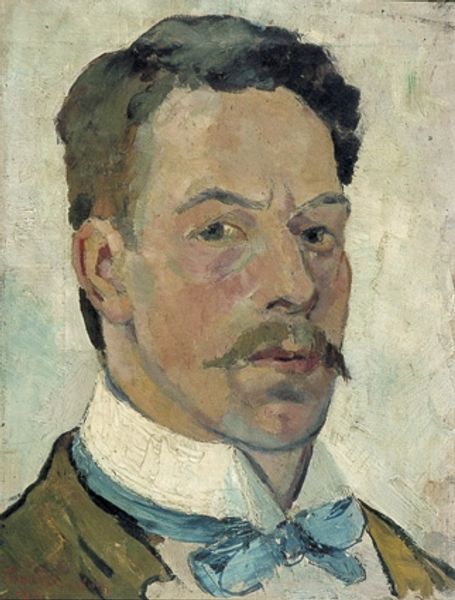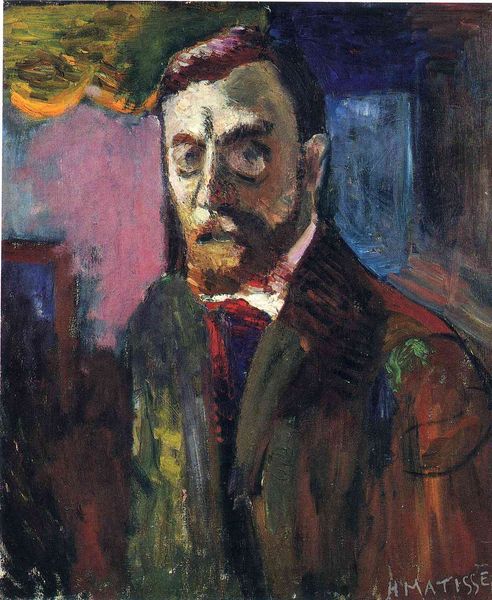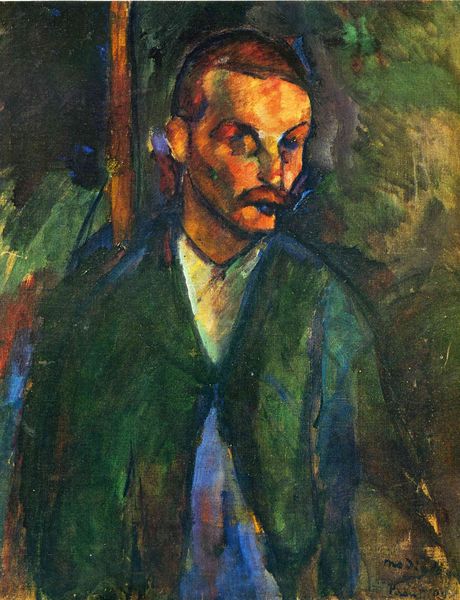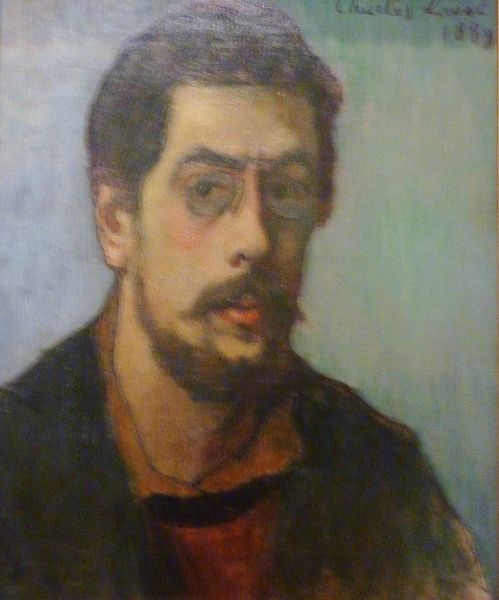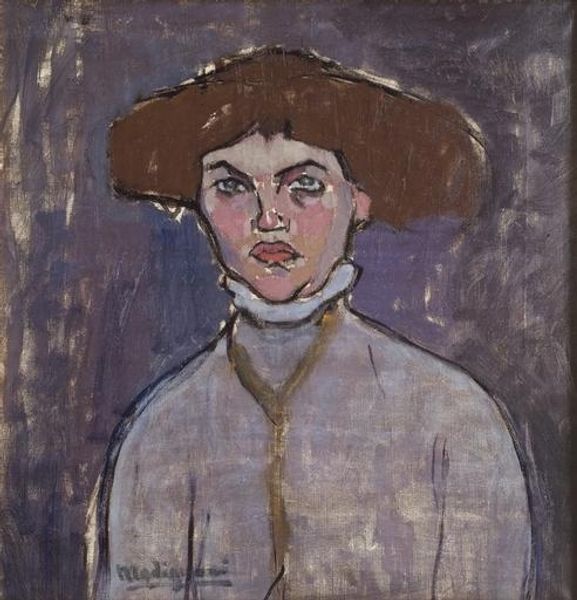
oil-paint
#
portrait
#
self-portrait
#
oil-paint
#
oil painting
#
post-impressionism
Copyright: Public Domain: Artvee
Paul Gauguin’s ‘Self-portrait with a hat’ is an oil on canvas. The post-impressionist work hints at Gauguin's developing primitivism. Painted in France, it reflects a period where artists questioned academic traditions, seeking authenticity outside established art institutions. Gauguin, a stockbroker turned painter, embodies this shift. Here, he presents himself in working-class attire, rejecting bourgeois expectations. The self-portrait is set within what seems to be his studio. The hints of non-Western art and the artist's confident gaze suggest a deliberate construction of identity. Gauguin’s radical rejection of academic art and social norms, reflects a broader cultural desire to challenge the status quo. To fully understand Gauguin’s art, scholars explore his writings, letters, and exhibition records, which shed light on his artistic intentions. By examining such sources, we can better understand how the cultural and institutional context shaped his artistic vision.
Comments
No comments
Be the first to comment and join the conversation on the ultimate creative platform.
